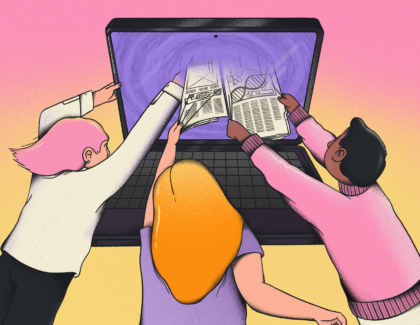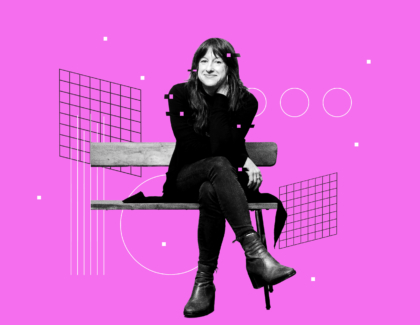Sign up for the daily CJR newsletter.
Late last month, I had an experience unlike any other in my professional life. For two days, I was surrounded by people who work in, or have a specific interest in, fact checking. Yes, someone decided to take the seemingly unprecedented step and create an entire conference about fact checking.
The conference was co-sponsored by Netzwerk Recherche and Der Spiegel, the venerable German weekly magazine. It was held in Hamburg the last weekend of March, and I was invited to give a workshop about preventing factual errors and deliver a keynote address about the rise of external fact checking, a topic I touched upon in a previous column and in my book.
Even though the vast majority of the other presentations at the conference were in a language I couldn’t understand, it was clear that one notable story was that of Der Spiegel itself. It turns out the publication is home to what is most likely the world’s largest fact checking operation. This came as something of a surprise not only to me, but also to the two editors from The New York Times Magazine and The New Yorker that joined me as speakers at the conference. (You can read more about the English presenters in this post on my Web site.)
The New Yorker currently has sixteen fact checkers including Peter Canby, the head of the department, whom I met for the first time in person in Germany. The New York Times Magazine, which was represented by managing editor Sarah Smith, has fewer checkers on staff than The New Yorker, though it also works with freelancers. (Smith wrote the excellent book, The Fact Checker’s Bible.) And so there we sat, in the outrageously decorated meeting area at Der Spiegel, staring at German PowerPoint slides revealing that we were in fact inside the walls that house a rather large and amazing fact checking department.
Roughly eighty full-time people work in fact checking and the research/library at Der Spiegel. It calls this its “Dokumentation” department. Another thirty or so part-timers also do duty at the magazine. That’s an astounding, unprecedented number. Dr. Hauke Janssen, the head of “dokumentation,” delivered the opening presentation of the conference. Though the words were unintelligible (my fault, not his) it soon became clear that he was detailing an old and very detailed process. The next day, I sat down with Maximilian Schaefer, a fact checker at the magazine who specializes in science and technology articles, and Axel Pult, a former checker who is now the deputy head of the department, to discuss fact checking at Der Spiegel. Below is an edited transcript of our discussion.
Craig Silverman: When did fact checking first start at Der Spiegel? I got the impression from yesterday’s presentation that it’s been there for a while.
Axel Pult: Spiegel started in 1947 or 48, and according to the presentation of Hauke Janssen last morning, fact checking kind of developed during the first years, but was really established in the ’50s. It was established by the publisher himself and the leading figures in the company. They came to the conclusion that it’s important to avoid mistakes, and it’s important to make it possible to publish things that are checked twice—and not only [checked] by the author.
CS: How many people are in the department?
AP: There are seventy people checking the facts, but also some people are working on handling the database and doing indexing, and stuff like that. It’s almost 100 people, although … some of the people only work part-time. It’s not 100 people working full-time. You can say about eighty full-time jobs.
CS: Why don’t you explain the archives and library you have?
AP: We have a database which mainly contains press articles from the published press, but which also contains documents we call “grey literature.” It means something [that is] informal or not frequently published, something like a leaflet from somebody.
CS: Would a one-time government report fall into that category as well?
AP: Yes. We are also starting to archive things like videos or MP3 files, but this is still in the beginning [phase]. It is mainly text. The photo archive is a different thing.
Maximilian Schaefer: One difference I noticed yesterday, if I understand Sarah Smith correctly, is that [The New York Times Magazine] are using one person to check the text and the photographs. Here it’s different: we have one person to check the facts, and another to check the photographs.
CS: What about illustrations?
MS: The illustrations are checked by the text fact checker. The reason is [illustrations often] contain factual information.
AP: … There are two main purposes of our database. The first is to do the research in the process of preparing articles. The writers department calls us up or sends us an e-mail or comes by our office, and we develop a plan of what materials are needed to research and write articles. One of the researchers—who are the same people as the fact checkers—works with them. In a way you could say that during a working week, the first three days, from Monday to Wednesday, we are researchers and Thursday and Friday we are fact checkers. It’s oversimplified, but in a way it’s like that.
CS: How do you determine which sources are reliable and which aren’t?
AP: … In the German press, there’s newspapers that are more reliable than others, and of course [this knowledge is part of] the qualifications of good fact checkers—to know the sources in his field and rely on these.
MS: There are also differences between departments. The politics checkers are using more cross-checking with published sources [like newspapers]. For example, has Angela Merkel already said this quote to another newspaper? At the science [checking] department, if we’re reporting about a new scientific fact we don’t only look at what newspapers have written about it—we look at the original papers of the scientists.
CS: Your fact checkers are organized by areas of expertise. What are the specialties that you have for fact checkers?
MS: Politics, science, economics, foreign affairs, culture, and sports, which is small—only one person. German politics is our biggest department … And, for example, our fact checker for the medical stories used to work as a doctor.
CS: So the idea is to match the expertise with the subject because you know the right places to look.
MS: Also, we are kind of in-house experts. So if somebody writes an article and wants to know some physics fact, he calls me and usually I can give it to him out of my own expertise. I usually don’t have to call somebody else. We’re consulted by the authors.
CS: That’s one big difference with the American model, where the checker doesn’t get involved until the piece is finished or close to finished. Whereas you might be consulted even before the writer starts writing …
MS: Yes. The illustration department often has an idea and then calls and asks if it’s possible to do it like this, or to get the data we need to do the illustration. So we are involved also in illustration creation.
AP: Yesterday during the presentation there was a question about whether there is a conflict of interest because of this construction—or, to say in other words, because you check your own research. I don’t think it’s really a problem. It would be a problem if somebody would be the fact checker of his own writing … but assistance during the research process is okay. If I am fact checking an article which I have assisted with research, it doesn’t represent any problem because [the article doesn’t only contain] the research from us. The author has researched a lot of new material … Also, it’s not a problem to know some of the sources beforehand—it’s almost an advantage because you selected them with lots of time to do so, and because you rely on them. If the article refers to them, it’s okay—it’s not a disadvantage, it’s an advantage.
CS: Is there a different mentality for when you are acting as a researcher compared to when you become a fact checker?
MS: Not really. In both cases you have to find reliable information…
AP: There is one difference, according to my experience … in the process of research you are on a team with the author. In process of fact checking, it’s more of an adversarial relationship.
MS: The relationship is different, true. But the way of working isn’t. In both cases, I try to find accurate information. In the research phase, I try to find a broader amount of information. And the fact checking is guided by the facts provided in the article.
CS: Do you think your readers know about this very involved fact checking process?
AP: I think so, yeah. One of the reasons to have such a big and of course financially significant fact checking and research department is to build up a special relationship between reader and magazine. In German there is a term [that means] “reader-magazine connection.” And it has something to do with the special image of Der Spiegel in Germany.
CS: Why do you think you’re the only ones who do this in Germany?
AP: We’re not the only one. We’re the one who does it in the most sophisticated way.
MS: I think it is a [part of our magazine’s] culture, and because Der Spiegel wants to be—and is—a high quality product.
AP: And let’s say it: For many years [the magazine] was also economically a very successful product. It had the money to sustain such a significant department, and that’s the reason why it’s interesting to see what is going to happen when [we have] less money.
Correction of the Week
“An earlier edition of this story incorrectly stated that ACORN advisers posed as a prostitute and a pimp. In fact, two conservatives who posed as a pimp and a prostitute sought tax tips from ACORN advisers.” – The Washington Post
Has America ever needed a media defender more than now? Help us by joining CJR today.






